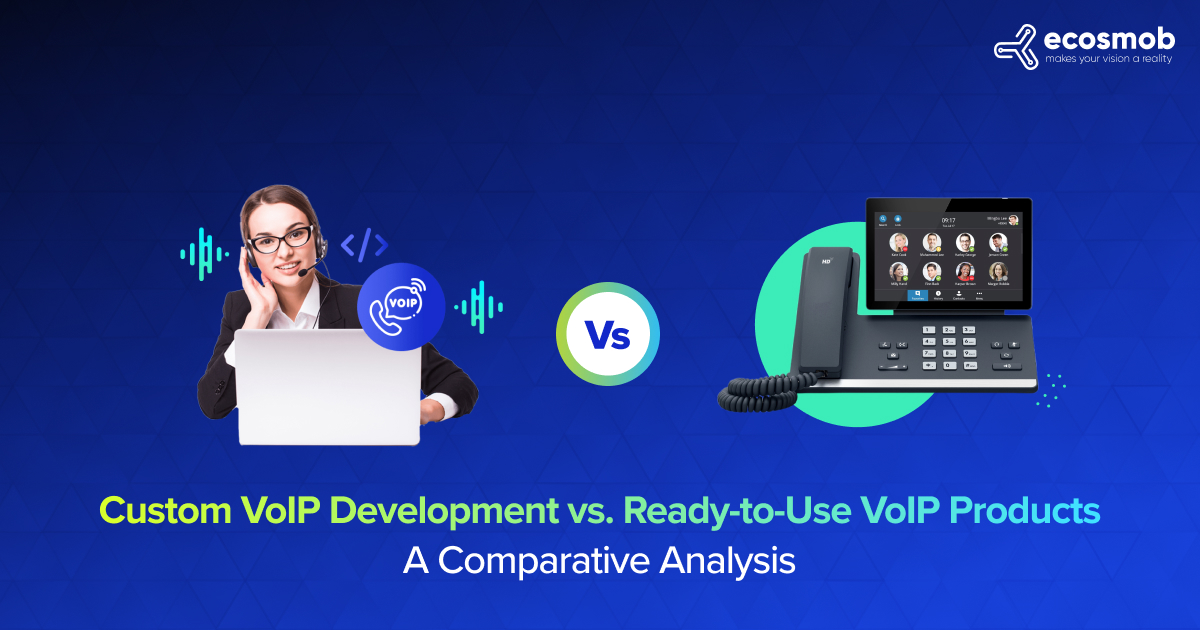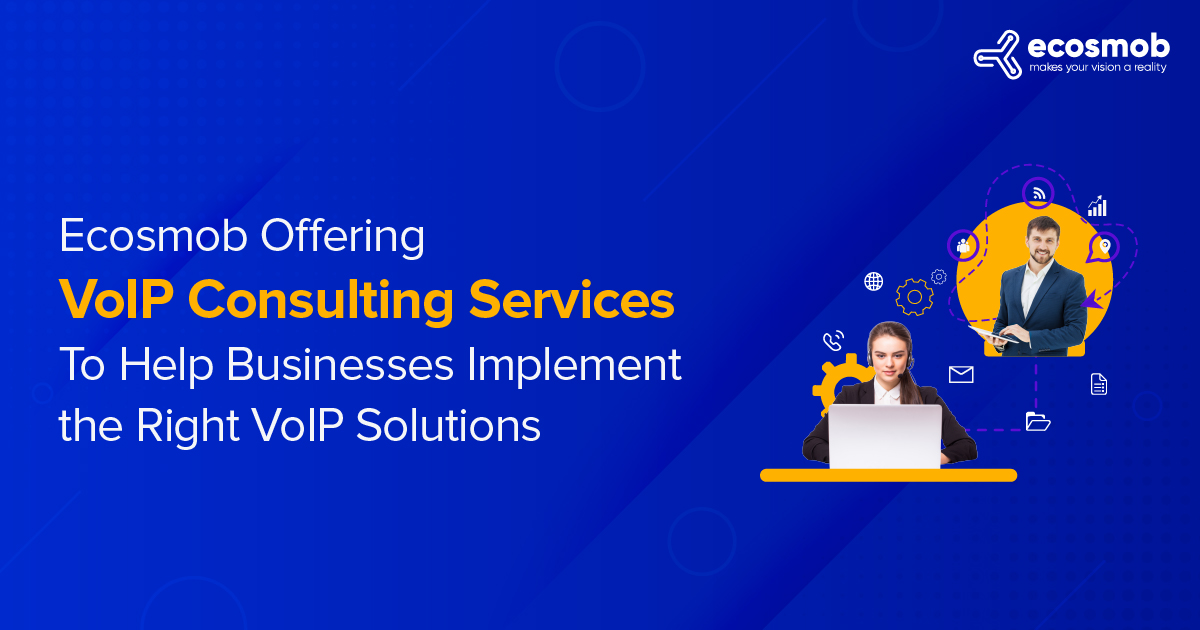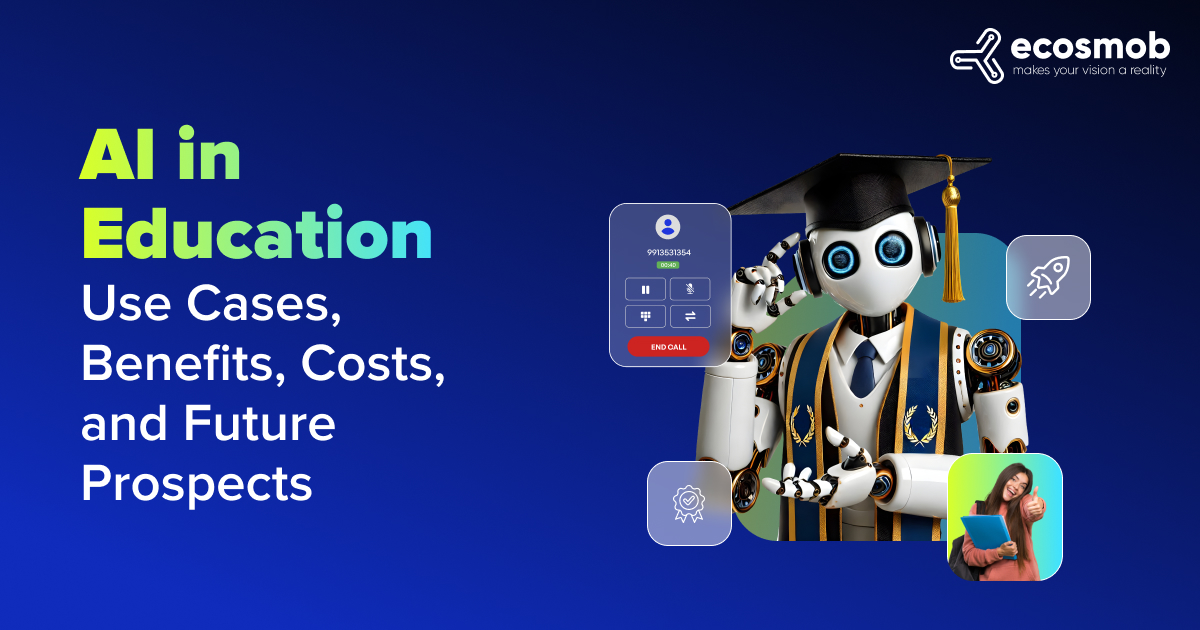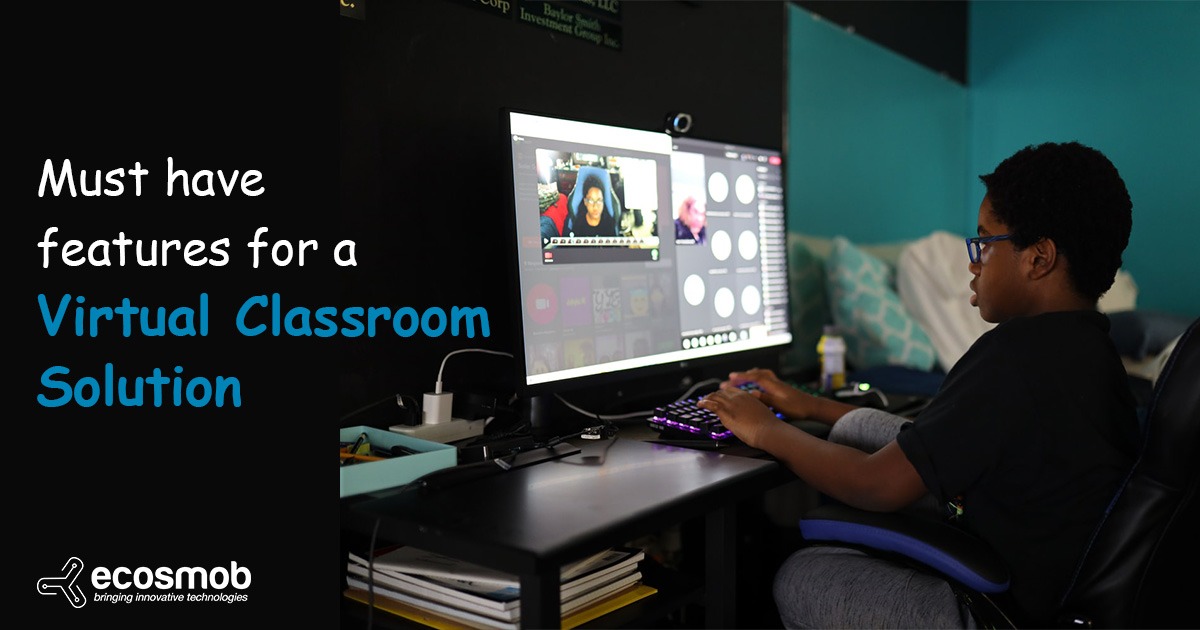QUICK SUMMARY
A more thoughtful approach to learning, know-how virtual classrooms, and video conferencing make education more accessible, flexible, and engaging by connecting learners and instructors in real-time from anywhere.
With advancements in technology and the rapid rise of remote work and online education, virtual classrooms and video conferencing in education have transformed traditional learning and educating interactions. These tools allow users to connect from anywhere, anytime, providing flexibility and enhanced engagement.
A quote says, “E-learning opens doors to education that were previously closed, bridging gaps across continents and cultures.” VoIP and Unified Communication solutions have made it possible. Online learning has many benefits, one of which is the flexibility afforded by the virtual classroom.
We all used to love offline classes from school, sitting beside our beloved friends, and eating lunch boxes between ongoing courses, but virtual classrooms have a lot more in the box for you.
Ensure a front-row seat to your learners with virtual classrooms and a video conferencing approach.
What is a Virtual Classroom?
A virtual classroom is an online learning environment where students and teachers interact in real time, using video conferencing tools, digital resources, and collaborative features. Unlike traditional offline classrooms, virtual classrooms are accessible from any device connected to the Internet, enabling users to join from different geographical locations and times.
What is Video Conferencing?
Video conferencing in education refers to video-based communication tools enabling real-time communication between learners and teachers from different locations. These tools allow educators to deliver live lessons, host discussions, and collaborate with students just as they would in a traditional classroom setting.
Platforms like Zoom and Google Meet have become excellent options for video conferencing amidst the COVID-19 pandemic.
In a virtual classroom, video conferencing is the primary medium for face-to-face interaction, providing a space for teachers to give lectures, answer questions, and encourage engagement.
Features such as live video, audio, chat, screen sharing, and video conferencing replicate many aspects of in-person learning while also adding unique benefits.
Benefits of Virtual Learning and Video Conferencing
Let us explore some undeniable but unknown advantages of virtual learning and its video conferencing tool.
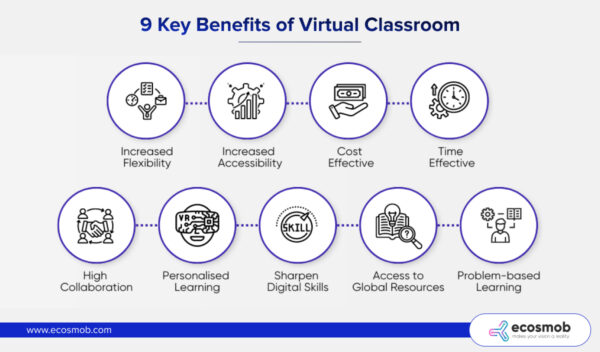
Enhanced Engagement –
Features like chats and polls promote active participation. Tools like whiteboards and screen sharing also make lessons more interactive, catering to various learning styles.
Personalized Learning –
Virtual classrooms can be recorded, enabling learners to access and review material according to their convenience and availability. This benefits learners who may need more time to absorb complex topics.
Global Collaboration Opportunities –
Virtual classrooms can bring learners and teachers from different locations worldwide together. Global connections often lead to new ideas, diverse perspectives, and a broader understanding of international issues.
Environment-Friendly –
By reducing the need for physical travel, virtual classrooms help lower carbon emissions, contributing to environmental sustainability.
Real-time Feedback and Monitoring –
Educators and learners can provide instant feedback. Also, educators can track students’ progress through assessment tools that help identify areas of improvement for individuals.
Flexibility and Accessibility –
Students and teachers can join from anywhere and anytime, making education more accessible for those in remote or unreached areas. This flexibility enables learners to balance education and family responsibilities or other commitments.
Cost Cutting –
Virtual classrooms reduce travel and accommodation expenses, and institutions save on physical infrastructure and maintenance costs.
(Also Read – A guide to must-have features for a virtual classroom solution)
Challenges and Considerations
Since every good innovation has some questions raised, here are some for Virtual classrooms.
While virtual learning and video conferencing have many benefits, challenges such as the digital divide still need to be addressed, which affects those without a stable internet connection or supported devices.
Increased screen time and lack of physical interaction are other common issues, as prolonged screen time may not provide the traditional classroom experience.
However, organizations can help by providing resources for stable internet connections and suitable supported devices. Implementing teaching strategies for engagement and interactive activities might mitigate some drawbacks of virtual-only learning environments.
(Also Read – What are the benefits of VoIP in education?)
To Sum Up
Virtual classrooms and video conferencing tools have redefined learning and collaboration, offering flexibility, accessibility, and engagement. By providing personalized and cost-effective solutions and promoting global collaborations, these tools have become crucial to quality education. While challenges remain, the advantages of virtual learning always outweigh the drawbacks, indicating that virtual learning and conferencing are here to stay.
We at Ecosmob help your educational organization adopt virtual classroom and video conferencing solutions by providing tailored, scalable, and featured digital platforms to deliver a quality education experience for both instructors and learners across the globe, no matter where you are!
Create classrooms wherever you go, whatever you do, and make learning limitless.
FAQs
What is the meaning of video conferencing in education?
Video conferencing is essential in education as it offers various benefits, such as enhanced engagement, global collaboration opportunities, environmental friendliness, real-time feedback and monitoring, and cost-cutting.
How does video conferencing impact learning?
Video conferencing extends beyond live lectures and virtual classrooms, removes geographical barriers, and lets students interact anytime and anywhere, increasing focus on global issues and justifications.
What do teachers use as a video conferencing solution?
Google Meet, Zoom, Teams, Cisco Webex, and Skype are the top-rated video conferencing solutions used by educators.
How can schools use videoconferencing?
Educational institutions can use video conferencing tools for assessments, review sessions, guest speakers, and teacher conferencing.



